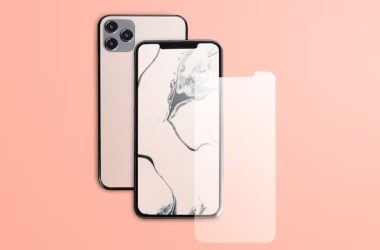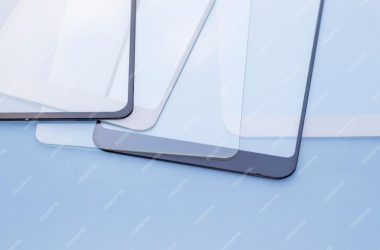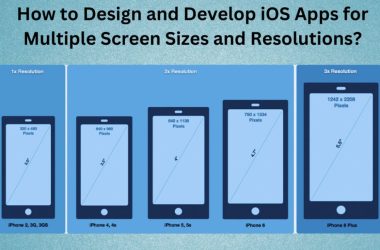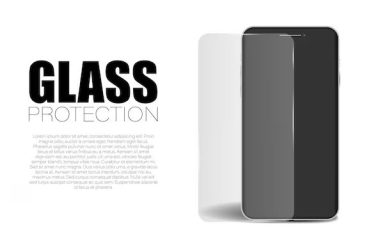Apple’s iPhone screens come from a variety of suppliers, though the primary source is Samsung Display.
Here’s an overview of where Apple gets the LCD and OLED displays for different iPhone models:
iPhone LCD Screens
For earlier iPhone models with LCD screens (iPhone 3G through iPhone 8 series), Apple sourced displays from several manufacturers:
- Samsung Display – supplied majority of LCD screens
- LG Display – secondary supplier of LCD screens
- Japan Display – smaller % of LCD supply
- Sharp
- AU Optronics
The LCD displays were manufactured at factories located in South Korea, Japan, Taiwan, and China.
iPhone OLED Screens
Starting with the iPhone X in 2017, Apple switched to using OLED displays for its flagship iPhones. The OLED screens offer higher contrast, deeper blacks, and better power efficiency compared to LCD.
For OLED iPhone screens, Samsung Display is the primary supplier. Other OLED screen manufacturers for iPhones include:
- LG Display
- BOE
However, Samsung remains the leader, estimated to supply around 80% of OLED displays for iPhones as of 2022. Apple sources these OLED panels from Samsung’s factories located in South Korea and China.
Latest iPhone Models
Here’s a breakdown of which manufacturers are supplying screens for Apple’s latest iPhone models:
iPhone 13 Series
- Samsung Display – OLED screens
- LG Display – some OLED screens
iPhone SE (3rd gen, 2022)
- Japan Display – LCD screens
iPhone 12 Series
- Samsung Display – OLED screens
- LG Display – some OLED screens
- BOE – small % of OLED screens
iPhone 11 Series
- Samsung Display – OLED screens
- LG Display – LCD screens for iPhone 11
Why Samsung Dominates OLED Supply
There are a few key reasons why Samsung Display has become Apple’s primary supplier of OLED screens for iPhones:
- Early investment – Samsung started developing OLED technology years before Apple adopted it. They invested billions into OLED R&D and manufacturing capacity.
- Economies of scale – As the world’s largest producer of OLED panels, Samsung benefits from lower costs due to economies of scale.
- Vertical integration – Samsung boasts an end-to-end OLED supply chain within its affiliates. This includes materials, equipment, component manufacturing, and display assembly.
- Ongoing innovation – Samsung consistently innovates on OLED production methods, display designs, and materials technology.
- Established relationship – Samsung has partnered with Apple on displays since the first iPhone. This gives Apple comfort in relying on Samsung’s production and quality control capabilities.
Essentially, Samsung was far ahead of other display makers in developing efficient and high-performing OLED screens. And they could ramp up manufacturing capacity to meet Apple’s huge demand for tens of millions of iPhone displays per quarter. For Apple, it made sense to tap into Samsung’s existing scale and experience with OLED rather than taking a risk on other display suppliers playing catch-up.
Apple’s Efforts to Diversify OLED Sourcing
While Samsung dominates OLED supply today, Apple doesn’t want to rely too heavily on a single supplier. There are risks of supply chain disruption if production bottlenecks or political/trade tensions arise.
That’s why Apple has been making efforts to diversify its OLED sourcing:
- Partnered with LG Display to develop and manufacture OLED screens, although their production volume remains much lower than Samsung’s.
- Supported BOE’s entry into the OLED display market. BOE is China’s largest display maker.
- Invested billions in LG Display and other display manufacturers to expand OLED production capacity.
- Reportedly funded development of OLED manufacturing facilities in Taiwan to be operated by Foxconn and AU Optronics.
However, industry analysts don’t expect any supplier to overtake Samsung’s lead in the next 3-4 years. BOE and LG will likely remain secondary sources for OLED iPhone screens in the foreseeable future.
Apple’s Influence on iPhone Displays
Although Samsung and other display makers are responsible for manufacturing iPhone screens, Apple exercises significant influence over iPhone display design and production:
- Custom display designs – Apple creates customized OLED display designs featuring notch sizes, screen curvature, pixel density, thin bezels, etc. optimized for iPhone aesthetics and features.
- Rigorous quality testing – Apple subjects display panel shipments to rigorous inspection and quality assurance testing to meet thresholds for attributes like color accuracy, uniformity, brightness, etc.
- Supply chain management – Apple coordinates timing of display component orders across manufacturing partners to balance iPhone production and minimize surplus inventory.
- Volume forecasts – Apple provides suppliers with iPhone sales and production forecasts so fabs can plan capacity expansion and allocate production lines.
- Manufacturing equipment – Apple sometimes provides manufacturers with proprietary equipment designs and custom machinery needed for iPhone display fabrication.
- Technical collaboration – Apple works closely with display makers during product development to implement new display technologies in iPhones, such as promoting adoption of flexible OLED panels.
Apple maintains significant bargaining power given the iPhone’s size in the smartphone market. But display suppliers like Samsung also benefit from gaining Apple’s high-volume display orders and from co-developing cutting-edge screens.
MicroLED Displays
MicroLED is an emerging display technology garnering interest from Apple and others as a potential successor to OLED. MicroLED features self-emissive pixels like OLED but based on tiny LEDs fabricated on silicon wafers.
Potential benefits of microLED displays:
- Higher brightness, contrast, and efficiency vs. OLED
- Longer lifetime and durability
- Bezel-free designs with minimal panel borders
- Fabrication using existing semiconductor manufacturing
However, microLED remains highly challenging to produce at scale for consumer devices. Issues to overcome include precisely aligning/transferring millions of microscopic LEDs to display backplanes, wafer yields, and high costs.
Apple acquired microLED firm LuxVue in 2014 and reportedly has a secret R&D facility developing microLED displays for future Apple Watch and AR/VR products. But microLED isn’t expected to reach iPhone displays for several years.
Growth of Plastic OLED Display Manufacturing in China
Although Samsung leads in OLED today, Chinese display makers are rapidly expanding production of plastic OLED displays. Key players include:
- BOE – China’s largest display maker. Recently opened first flexible OLED fab.
- CSOT – TCL group’s display arm aiming for 30 million flexible OLED panels in 2024.
- Visionox – Major supplier of OLED drivers now developing flexible OLED manufacturing.
- Tianma – Shanghai-based firm with LTPO OLED production for high-end smartphones.
- Royole – Pioneered flexible OLEDs but still limited production capacity.
Spurred by government support and access to skilled engineering talent, Chinese firms are pouring investment into scaling up POLED output. The expanded capacity benefits local smartphone brands but also Apple and others looking to diversify OLED purchasing beyond Samsung Display.
Apple’s Motivations for OLED Supply Diversification
Although Samsung provides most iPhone OLED displays, industry analysts see Apple strategically diversifying its OLED supply chain. Apple’s motivations likely include:
- Cost reduction – Adding suppliers fosters price competition between vendors.
- Supply security – Spreading orders reduces disruption risk if a vendor has production issues.
- Technology access – Alternative suppliers spur innovation; BOE provided the first flexible OLED iPhone panel.
- Geopolitics – Expands supply network beyond Korea/Taiwan amidst political tensions.
- Vendor negotiation leverage – More supplier options strengthen Apple’s bargaining position.
- Strategic investment – Funding display partners helps scale up next-gen technology (e.g. microLED).
However, analysts caution it will take years for other suppliers to match Samsung’s scale, efficiency and quality. BOE and LG Display may gradually secure 20-30% of iPhone OLED orders by 2025, with Samsung remaining the dominant source.
Challenges Facing Foldable Display Makers
Foldable displays are an emerging form factor pioneered by Samsung and being explored by Apple and others. But technical barriers remain for foldable displays to go mainstream:
- High costs – Foldable panels currently cost over 2x rigid OLED screens.
- Limited durability – Repeated folding can degrade screen laminate layers.
- Visible crease – A visible crease forms across the fold area.
- Thick glass – The ultrathin glass or plastic used needs protective layers.
- Scaled manufacturing – Redesigned production processes and equipment are required.
- App compatibility – Apps must adapt to work across changing screen geometries.
Foldable display makers are working to enhance durability and narrow the cost gap with rigid OLED. But production scaling remains tricky. It may be 3-5 years before foldable volumes are sufficient for wider smartphone adoption.




